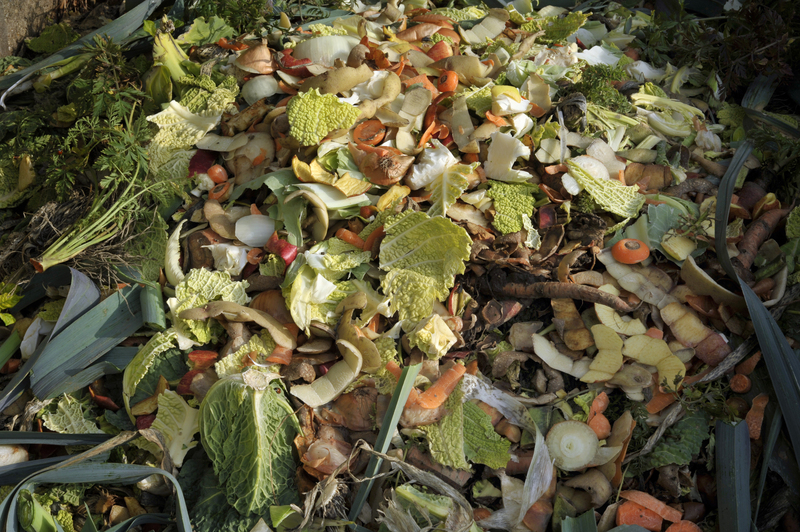The Historic Journey of Waste Solutions
In our modern era, efficient waste solutions have become integral to the sustainability and cleanliness of society. However, the story of how we manage waste spans thousands of years, reflecting advancements in technology, culture, and environmental awareness. The Historic Journey of Waste Solutions is a fascinating tale of ingenuity and adaptation, showing how civilizations have responded to the pressing issue of waste throughout history.

Early Waste Management: From Prehistoric Times to Antiquity
The Beginnings: Waste Disposal in Ancient Societies
Waste is as old as human civilization itself. Early hunter-gatherer groups generated minimal waste, primarily food remnants and tools made from natural materials. As settlements grew and nomadic lifestyles faded, the need for organized waste disposal became increasingly apparent.
- Mesopotamia (c. 4000 BC): Among the first urban societies, Mesopotamians used the Tigris and Euphrates rivers to dispose of household refuse. Waste was commonly dumped in streets, leading to clogged roads and health hazards.
- Ancient Egypt: Egyptians utilized the Nile for both sustenance and waste clearance. However, as cities expanded, so did the heaps of refuse on their outskirts.
- The Indus Valley Civilization: This ancient society (c. 2500 BC) is credited with one of the earliest documented sanitation systems, featuring covered drains and waste chutes in their urban planning.
The Greco-Roman Innovations in Trash Removal
The Greeks and Romans greatly influenced historical waste management. With growing urban populations, waste management turned from an afterthought to a necessity.
- In Athens, public waste removal laws mandated that trash be transported outside city walls, attempting to limit the spread of diseases.
- Rome famously introduced the Cloaca Maxima, an extensive sewer system designed to transport both stormwater and sewage, representing a major leap in historic waste solutions.
- Public latrines and cesspools were common, but waste often ended up dumped in the Tiber River or surrounding countryside.
Despite these advances, the lack of understanding about bacteria meant that waste still posed significant health threats, leading to recurring outbreaks of illness.
Medieval Waste Solutions: Dark Ages and Urban Challenges
Waste in the Middle Ages: Neglect and Nuisance
After the fall of the Roman Empire, many sophisticated waste management systems fell into disrepair. During the Middle Ages, waste was frequently thrown into streets or open drains. The accumulation of organic and human waste contributed to foul living conditions and rampant disease.
- Chamber pots were emptied out of windows, and garbage was often fed to hogs roaming city streets.
- Open sewers known as "kennels" ran along the center of roads, spreading disease and unpleasant odors.
- The infamous Black Death (1347-1351), which killed millions, was partly exacerbated by unsanitary conditions and poor waste removal methods.
Efforts by some cities to regulate and improve trash collection were sporadic and largely ineffective until the Renaissance spurred renewed attention to public health.
The Renaissance: Birth of Organized Waste Collection
As urban populations rebounded, city officials in places like Paris and London began employing early forms of waste management professionals known as "scavengers" or "rakers." These workers removed refuse from streets and delivered it to city limits or designated pits.
- Laws were introduced barring residents from dumping waste on public roads. Violators faced fines or labor penalties.
- Night soil collectors became a common profession, gathering human waste for use as fertilizer on farmland.
- These changes marked a significant step forward, highlighting the historic journey of waste solutions as a continuous evolution.
The Industrial Revolution: A Turning Point for Waste Management
Waste Explosion: The Vibrant Chaos of Urbanization
The 18th and 19th centuries witnessed an unprecedented surge in waste production as the Industrial Revolution transformed economies. Factories, dense housing developments, and new consumer products led to the accumulation of trash on a scale never seen before.
- Growing cities like London, Manchester, and New York struggled to keep up with mounting refuse.
- The introduction of packaging and disposable goods further complicated waste disposal.
- Epidemics such as cholera highlighted the urgent need for effective waste solutions.
Pioneering Solutions: From Dust Yards to Landfills
The rise of public health sciences brought about ground-breaking changes in waste management strategies.
- The Public Health Act of 1848 (UK): Required local authorities to provide sanitation services.
- Joseph Bazalgette's Sewer Designs: In London, vast new sewer systems reduced disease rates and radically improved urban cleanliness.
- "Dust yards" collected ash from coal fires, which was then recycled by brickmakers or farmers.
- The first true landfills emerged, where waste could be systematically dumped and covered.
These systems formed the blueprint for many modern waste management solutions.
The 20th Century: The Age of Modern Waste Solutions
Municipal Solid Waste: A Growing Burden
By the 20th century, urban centers worldwide encountered a new challenge: the increasing complexity and volume of municipal solid waste (MSW). The variety of materials--plastics, metals, chemicals--required innovative waste solutions.
- Incineration plants, or "destructors," became popular in cities to reduce the physical volume of waste.
- Sanitary landfills replaced open dumping, reducing pests and health risks.
- Waste collection became a public utility, complete with specialized vehicles and scheduled pickups.
- Recycling programs appeared in response to concerns about depleting resources and pollution.
Environmentalism and the Rise of Modern Recycling
The latter half of the 20th century saw a dramatic rise in environmental awareness. Major oil spills, air pollution, and the mounting threat of overflowing landfills motivated governments and communities to reconsider their waste practices.
- The first curbside recycling program appeared in the 1970s, focusing on glass, newspaper, and aluminum.
- Incineration technology improved, with energy-from-waste plants generating electricity from burnt refuse.
- Legislation such as the US Resource Conservation and Recovery Act (RCRA, 1976) established standards for hazardous and municipal waste disposal.
- Composting became a popular method for diverting organic waste from landfills.
These decades also marked the emergence of integrated waste management strategies, which sought to combine reduction, recycling, and safe disposal into a comprehensive system.

The Digital Age: Smart Waste Solutions and Circular Economy
Cutting-Edge Solutions for the 21st Century
The evolution of waste management did not stop at recycling and landfills. The historic journey of waste solutions has recently entered a new phase, characterized by high-tech and sustainable innovations.
- Smart Bins and IoT: Sensor-equipped bins can now notify waste haulers when they are full, optimizing collection routes and reducing emissions.
- Waste-to-Energy (WTE): Modern facilities convert non-recyclable materials into renewable energy, offering a dual solution for waste and energy needs.
- Advanced Recycling Technologies: Robotics and AI identify and sort recyclables with unprecedented precision, increasing recovery rates.
- Urban Mining: Recovering valuable metals from electronic waste (e-waste) has emerged as a vital aspect of sustainable waste management.
Policy makers now focus on the "circular economy"--an economic system aimed at eliminating waste through continual reuse and recycling. Major companies and cities are embracing products designed for repair, reuse, and reprocessing, minimizing landfill reliance.
Global Challenges and Future Perspectives
Despite technological strides, the world still faces major obstacles regarding trash disposal and recycling. Rapid population growth, increased consumption, and the proliferation of non-biodegradable waste continue to challenge even the best waste solutions.
- Plastic pollution, especially in oceans, demands urgent and innovative approaches.
- Developing nations often lack the infrastructure for organized waste collection, leading to unregulated dumpsites.
- Microplastics, hazardous chemicals, and electronic waste present mounting environmental and health risks.
- The need for global cooperation and knowledge exchange has never been greater.
Yet, the historic journey of waste solutions gives reason for hope by proving our ability to adapt and improve. From throwing refuse onto the streets to building smart, zero-waste cities, humanity continues to rise to each new challenge.
Conclusion: Learning from the Past, Innovating for the Future
The historic journey of waste solutions is a powerful reminder that managing trash isn't just a technical problem--it's a story of civilization itself. As we look back, it's clear that every age has contributed essential lessons in dealing with society's byproducts.
- From rudimentary dumps to the invention of the modern landfill.
- From lawless dumping to city-wide collection networks.
- From waste as a nuisance to waste as a resource in the circular economy.
In our connected and environmentally conscious age, the next chapters remain unwritten. What is certain, however, is that innovative waste management strategies will be crucial for a cleaner, healthier planet. By integrating historical insights with cutting-edge technology, humanity can turn trash into treasure--and continue the remarkable journey of waste solutions for generations to come.